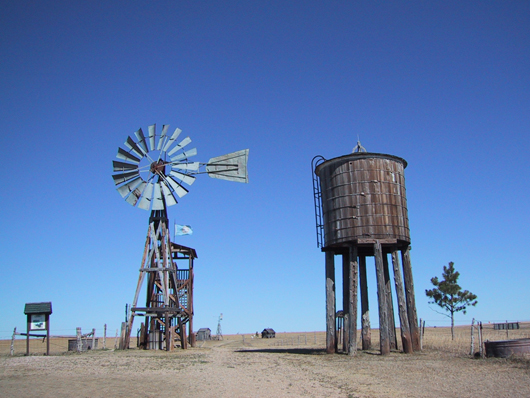
NEBRASKA CITY, Neb. (AP) – Usually, the folks who run museums hate dust. They like to keep artifacts and exhibits clean and tidy.
The Kregel Windmill Factory Museum, set to open April 26 in Nebraska City, is just the opposite. The museum treats dust like a fine patina on a bronze statue – not to be disturbed if at all possible.
The Lincoln Journal Star reports that dust is part of the story told within the Kregel museum’s walls, the story of how prairie windmills were made in small-town America in the early 1900s.
Back then, creaking windmills were a common sight on farms and ranches, where they pumped water from the ground for livestock and households. They were in towns and cities, too.
Today, windmills with brand names like Eli and Dempster rust quietly on abandoned farmsteads, their parts strewn in fields or ditches.
The story of the water-pumping windmill and what it meant to the survival of settlers is everywhere in the cluttered Kregel museum: hundreds of undisturbed boxes full of parts, benches littered with one-of-a-kind tools, yards of machine drive belts, heavy drill presses and saws, an old blacksmith’s forge tucked in a corner and an office reminiscent of a Norman Rockwell painting.
It’s as if everyone left one day and never returned to work.
And that’s what happened.
In 1989 owner Arthur Kregel had a stroke, and the Nebraska City factory closed, with everything intact. Kregel left it that way because he hoped to return one day. He died two years later, never having gone back.
In 1992 heirs donated the factory and its contents to the nonprofit Kregel Windmill Museum Co. of Nebraska City.
Now, thanks to the efforts of community leaders and contributions from local foundations, visitors will be able to see the last historic windmill factory in the United States – dust and all.
“The Kregels kept everything,” curator Jeremy Kirkendall, 31, said during a recent tour. “We tried to move as little as possible to try and leave it as it was.”
Kirkendall and Duane Smith, president of the museum’s board of directors, explained how the factory and its contents were saved and preserved for posterity – a task that required an innovative architectural approach and $1.7 million. Construction began in fall 2011.
“They built an exoskeleton around the building to encapsulate it and protect it from the elements,” said Kirkendall, a Lincoln native.
The factory made about 2,000 water-pumping windmills from 1903 until rationing of raw materials during World War II ended production. After the war, the business focused on maintenance and pump repairs and made beehives and stock tanks as a sideline.
Electronic kiosks placed throughout the museum help tell the story of early windmill manufacturing. Visitors can push buttons to watch videos, some of which show machinery and tools in use.
The factory hasn’t given up all of its secrets.
For instance, Kirkendall and museum volunteers still are poring over 200 to 300 bottles holding sand, gravel and soil from wells they drilled and installed in eastern Nebraska and western Iowa. When wells clogged up, workers used the samples to determine which materials could be to blame.
There are also itemized bills, notebooks, ledgers and blueprints to study, along with old photographs. Just how many items are in the factory museum is unknown. Smith estimates the number of artifacts on display and in storage at hundreds of thousands.
“We can still produce a windmill with very little trouble,” Kirkendall said.
The factory museum has an important story to tell, said Kirkendall, because windmills made it possible for people to settle in places far from rivers and streams, because they allowed them to draw water out of the ground.
“This is ingenuity and innovation at its finest and we need to remember that,” Kirkendall said. “It’s a big reason why we are here.”
___
Information from: Lincoln Journal Star, http://www.journalstar.com
Copyright 2013 Associated Press. All rights reserved. This material may not be published, broadcast, rewritten, or redistributed.
AP-WF-03-24-13 0505GMT
ADDITIONAL IMAGE OF NOTE


